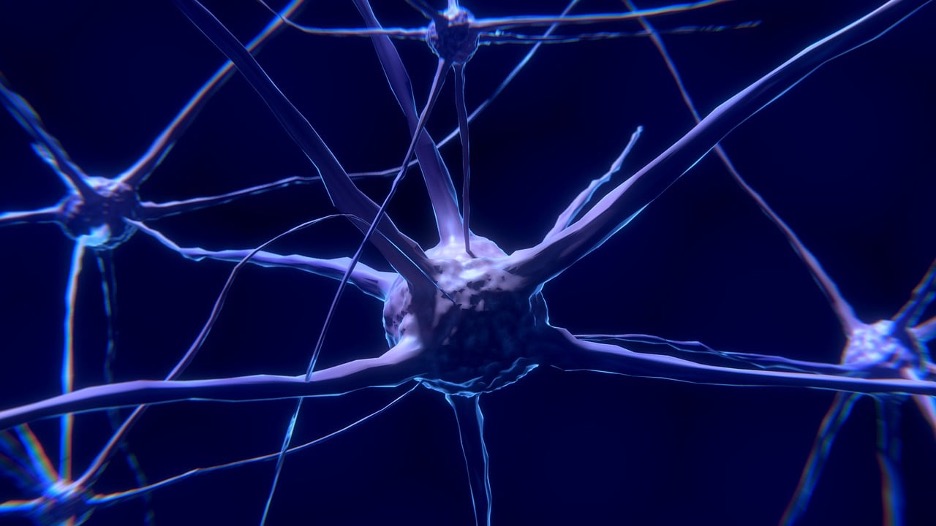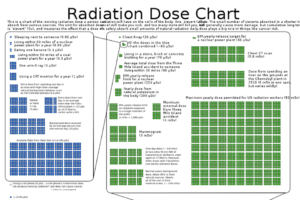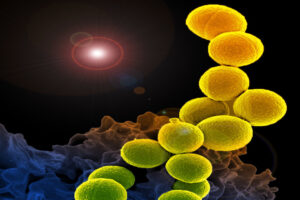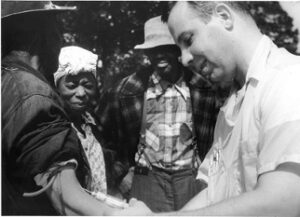For more neuroscience news, check out Akshaya’s organization on neuroscience research and service, UnknownNow

Source: ColiN00B, Pixabay
Amyotrophic Lateral Sclerosis (ALS) leaves its victims physically paralyzed and cognitively impaired1. It often begins with weakness in the arms or legs and slurred speech. However, the disease quickly sweeps through the body and saps the strength of muscles, hindering the ability to move, breath and eat. Cognitively, ALS impairs social and emotional functions of the brain2. A full 15% of ASL patients have frontotemporal dementia, and 35% experience behavioral impairment3. These cognitive deficits are associated with changes in personality and the creation of obsessions, irritability, and in many cases depression4. ALS is a progressive neurological disorder, and over time, muscle weakness eventually leads to respiratory failure. The average global incidence of ALS is 1/50,000 people per year, which is equivalent to 100,000 diagnosis5.
Currently, medications such as Riluzole, Edaravone, and Sodium phenylbutyrate-taurursodiol6 have been approved by the FDA for ALS treatment. While they help preserve muscle function by protecting motor neurons7, they do not halt the disease in its entirety. Additionally, the side effects vary among individuals and the drugs are not accessible to all patients8. This article explores recent research involving stem cell therapy and neuronal replacement as promising therapeutic strategies for ALS.
In the realm of stem cell research, engineering stem cells to provide neuroprotection – protecting neurons from cell death – is a major objective9,10. Stem cells can contribute to neuroprotection by producing molecules that support existing neurons, or by differentiating into neural cells to replace those that have died off11. In addition, stem cells can also provide immunomodulation – secreting substances that stimulate or suppress the immune system12. For instance, mesenchymal stem cells (MSCs) release anti-inflammatory molecules such as interleukin-10 (IL-10) to suppress pro-inflammatory immune cell activation and preserve neural tissue13.
As an example of an effort to support existing neurons, The Svendsen laboratory at Cedars-Sinai engineered stem cells that can be transplanted into the spinal cord of individuals with ALS. These stem cells produce a molecule called neurotrophic factor (GDNF) that increases the survival of motor neurons (MN’s) in the legs. In people with ALS, the glial cells that support motor neurons fail to do their job effectively, and motor neurons die off over time. The GDNF-producing stem cells take over the job of the failing glial cells and help preserve leg function in people with ALS for a longer period of time. A preliminary trial testing the safety of this therapy in 18 patients found no evidence of dangerous side effects. Future trials will test how well this therapeutic approach preserves leg function14.
In addition to lengthening the survival of motor neurons with stem cells that produce survival-stimulating molecules, an alternative approach is to replace dead or dying motor neurons altogether. Neuronal replacement allows for stem cell-derived neural progenitor cells to replace dead motor neurons and re-establish motor control5.
These cell replacement therapies often involve mesenchymal stromal cells (MSCs), cells isolated from tissue sources which have a multipotent differentiation capacity in vitro, or neural stem cells (NSCs), in part because they are easy to obtain19. NSCs are the endogenous stem cells of the CNS. Both NSCs and MSCs are multipotent cells, meaning that they can differentiate into multiple different cell types, and therefore have the potential to support, protect and replace motor neurons in people with ALS19.
An alternative approach is the use of induced pluripotent stem cells (iPSCs), which are also capable of differentiating into motor neurons. These iPSCs are differentiated cells that have been reprogrammed into stem cells with the ability to differentiate again into many different cell types. They can be derived from an individual with ALS and then used to treat the same person, limiting the possibility of immune rejection. The motor neurons created from iPSCs can also be used to screen for drugs that impact motor neuron function15,16.
A study led by Dr. Barney Bryson at the UCL Queen Square Institute of Neurology demonstrates the potential of transplanted stem-cell derived motor neurons to treat ALS. The researchers transplanted neurons into a mouse model designed to resemble an aggressive form of ALS. These mice have a mutated form of the protein SOD1, which leads to the loss of muscle-stimulating motor neurons and muscle wasting symptoms similar to human ALS20. The transplanted neurons were designed to be light-sensitive – they can be ‘turned on’ by a technique called optical nerve stimulation (ONS). After the transplant and subsequent stimulation, the mice showed a 13-fold plus increase in muscle contraction force, illustrating that the affected muscles in the ALS mouse model remained receptive to newly transplanted motor neurons, even until the late stages of the disease21. The researchers further gauged the effectiveness of the transplant with behavioral assessments and tests to motor function, such as grip strength tests.
Though these results in mice are very promising, this approach can only be translated into humans after extensive further study and clinical trials. For one, there are concerns about how stem cells would work in the human body17. Factors such as inflammation and oxidative stress could limit the survival of stem cells. Another issue is that stem cell production must follow rigorous good manufacturing practice (GMP) standards set out by the FDA. There is a lot of work necessary to develop rigorous protocols so that stem cell therapies are manufactured in a controlled manner to minimize adverse effects18.
Even though a lot of additional research is needed, the approaches of supporting or transplanting motor neurons to improve muscle function in ALS patients could become a treatment option that works for most if not all ALS patients22. Therapies that combine these two treatment approaches – support and transplantation – could be even more effective23. In addition to these new kinds of treatments, the combination of existing ALS drugs could be helpful – for example, combined usage of Riluzole and Edaravone24.
In the meantime, the focus remains on supporting people with ALS through their journey with the disease. Currently, the American Neurological Association, ANA, provides education and community to those with ALS and their families25. Through webinars and other services, they hope to foster a collaborative environment where researchers and scientists can work together to conceive of and publish relevant research to aid people with ALS. At the community level, ALS support groups offer additional support to patients and their loved ones.26.
References
- Amyotrophic lateral sclerosis (ALS). (2023). Mayo Clinic https://www.mayoclinic.org/diseases-conditions/amyotrophic-lateral-sclerosis/symptoms-causes/syc-20354022.
- Caga, J., Hsieh, S., Lillo, P., Dudley, K. & Mioshi, E. (2019). The Impact of Cognitive and Behavioral Symptoms on ALS Patients and Their Caregivers. Front. Neurol. 10.
- Crockford, C. et al. (2018). ALS-specific cognitive and behavior changes associated with advancing disease stage in ALS. Neurology 91, e1370
- Phukan, J., Pender, N. P. & Hardiman, O. (2007). Cognitive impairment in amyotrophic lateral sclerosis. Lancet Neurol. 6.
- Liu, B., Li, M., Zhang, L., Chen, Z. & Lu, P. (2022). Motor neuron replacement therapy for amyotrophic lateral sclerosis. Neural Regeneration Res. 17, 1633
- Amyotrophic lateral sclerosis (ALS). (2023). https://www.mayoclinic.org/diseases-conditions/amyotrophic-lateral-sclerosis/diagnosis-treatment/drc-20354027.
- FDA-Approved Drugs for Treating ALS. The ALS Association https://www.als.org/navigating-als/living-with-als/fda-approved-drugs#:~:text=There%20are%20currently%20seven%20drugs,%2C%20Tiglutik%2C%20Exservan%20and%20Nuedexta.
- Jiang, J., Wang, Y. & Deng, M. (2022). New developments and opportunities in drugs being trialed for amyotrophic lateral sclerosis from 2020 to 2022. Front. Pharmacol. 13.
- Neuroprotection. http://dx.doi.org/10.1016/B978-0-12-800763-1.00014-2 doi:10.1016/B978-0-12-800763-1.00014-2.
- Nguyen, H. et al. (2019). STEM CELL THERAPY FOR NEUROLOGICAL DISORDERS: A FOCUS ON AGING. Neurobiol. Dis. 126, 85.
- Molecule guides stem cells to damaged brain tissue. (2020). National Institutes of Health (NIH) https://www.nih.gov/news-events/nih-research-matters/molecule-guides-stem-cells-damaged-brain-tissue.
- Hung, C.-W. et al. (2010). Stem Cell-Based Neuroprotective and Neurorestorative Strategies. Int. J. Mol. Sci. 11, 2039.
- Kyurkchiev, D. et al. (2014). Secretion of immunoregulatory cytokines by mesenchymal stem cells. World J. Stem Cells 6, 552.
- Stem Cell-Gene Therapy Shows Promise in ALS Safety Trial. (2022). Stem Cell-Gene Therapy Shows Promise in ALS Safety Trial https://www.cedars-sinai.org/newsroom/stem-cell-gene-therapy-shows-promise-in-als-safety-trial/.
- Stem Cells. The ALS Association https://www.als.org/research/als-research-topics/stem-cells#:~:text=Stem%20cells%20may%20also%20have,but%20appear%20to%20be%20safe.
- Mao, Z., Zhang, S. & Chen, H. (2015). Stem cell therapy for amyotrophic lateral sclerosis. Cell Regeneration 4.
- Stem cells: What they are and what they do. (2022). Mayo Clinic https://www.mayoclinic.org/tests-procedures/bone-marrow-transplant/in-depth/stem-cells/art-20048117.
- Stacey, G. N. et al. (2019). Stem cell culture conditions and stability: a joint workshop of the PluriMes Consortium and Pluripotent Stem Cell Platform. Regen. Med. 14, 243.
- Thonhoff, J. R., Ojeda, L. & Wu, P. (2009). Stem Cell-Derived Motor Neurons: Applications and Challenges in Amyotrophic Lateral Sclerosis. Curr. Stem Cell Res. Ther. 4, 178.
- Philips, T. & Rothstein, J. D. Rodent Models of Amyotrophic Lateral Sclerosis. Curr. Protoc. Pharmacol. 69, 5.67.1.
- Donor motor neurons could restore muscle function in ALS. EurekAlert! https://www.eurekalert.org/news-releases/999260.
- Donor motor neurons could restore muscle function in ALS. (2023). elifesciences.org.
- Xu, X. et al. (2021). A perspective on therapies for amyotrophic lateral sclerosis: can disease progression be curbed? Transl. Neurodegener. 10, 1–18.
- Rokade, A. V., Yelne, P. & Giri, A. (2022). Riluzole and Edavarone: The Hope Against Amyotrophic Lateral Sclerosis. Cureus 14.
- American Neurological Association (ANA). https://myana.org/.
- ALS Support Groups. The ALS Association https://www.als.org/support/support-groups.
Related Posts
How The Fight For Protection of Indigenous Land Helps The Environment
Figure 1: The sheer amount of deforestation of the Amazon...
Read MoreMedical Overtreatment in the United States: Causes, Consequences, and Solutions
This article was originally submitted to the Modern MD competition...
Read MoreAddressing Medical Inequities in Healthcare Professional Deserts
This publication is in proud partnership with Project UNITY’s Catalyst Academy 2023...
Read MoreAntimicrobial Resistance in Underprivileged Communities
This publication is in proud partnership with Project UNITY’s Catalyst...
Read MoreUniversality of the Face: New Research Points to a Shared Human Commonality in Emotional Expression
Figure 1: Examples of emotional expressions Source: Andrea Piacquadio from Pexels Raising...
Read MoreCOVID-19 Clinical Trials and Racial Disproportionality
Figure 1: A doctor drawing blood from a patient as...
Read MoreAkshaya Ganji






